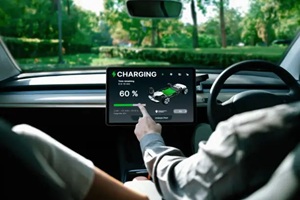


Why Your EV’s Summer Range Isn’t What You Expected—and What You Can Do About It
As a leading EV charger manufacturer in China, Topper Company provides reliable electric vehicle charging equipment and comprehensive charging solutions.
When buying an electric vehicle (EV), one of the first things drivers notice is the advertised “range”—the number of miles the car can travel on a full charge. This figure, however, is based on ideal lab conditions, not the unpredictable realities of daily driving. Terrain, speed, driving habits, and especially temperature can all affect real-world range. And while winter range loss is often discussed, summer heat can be just as impactful—if not more so.
EVs use lithium-ion batteries, which are sensitive to high temperatures. While cold weather usually causes only temporary performance dips, heat can lead to long-term degradation. Sustained exposure to temperatures above 85°F (29°C) can damage the battery’s internal chemistry, reducing its ability to hold a charge, slowing charging speeds, and shortening its overall lifespan.
Not all summer range loss is due to battery damage. More often, the car simply uses more energy to stay cool. Running the air conditioning and powering the battery’s thermal management system both draw power from the same battery that moves the car. Additionally, tire pressure fluctuations caused by heat can increase rolling resistance, using more energy for the same trip.
On average, drivers can expect a 5%–10% drop in range during very hot weather. This might not seem huge, but it can mean extra charging stops or slower travel on long trips.
1. Stay Plugged In When Possible
Try to keep your battery between 50% and 80% during extreme heat. This gives your EV enough energy to run its cooling systems without overcharging or stressing the battery.
2. Park in the Shade
Avoid parking in direct sunlight for long periods. Use garages, carports, or even windshield reflectors to reduce heat buildup inside the cabin and battery.
3. Pre-Cool While Plugged In
Use your EV’s app or in-car settings to cool the interior before you unplug. This keeps the cabin comfortable using grid power, not battery power.
4. Know Your Battery Chemistry
If you live in a hot region, consider an EV with a lithium iron phosphate (LFP) battery. These chemistries tend to handle heat better than other lithium-ion types.
EVs are typically more efficient at cooling than gas-powered vehicles. Gas engines generate a lot of waste heat, which the A/C has to fight against. EVs, on the other hand, don’t produce as much heat while running, and their electric A/C systems cool the cabin quickly—even when the car is parked or idling.
Heat may be a challenge for EVs, but it’s not a dealbreaker. With proper care and smart habits—like parking in shade, maintaining moderate charge levels, and pre-conditioning your cabin—you can reduce range loss and extend battery life. As technology advances, EVs are becoming even better equipped to handle extreme weather, giving drivers confidence year-round.
Your EV is designed to manage heat. You just need to give it a little help.Learn more about Google SEO.
